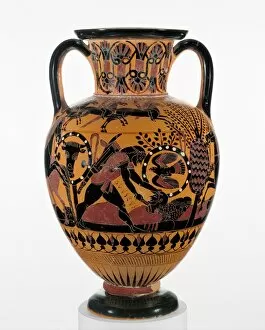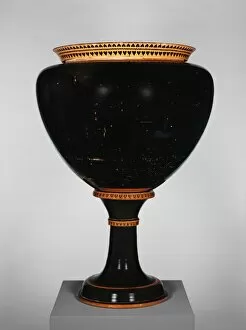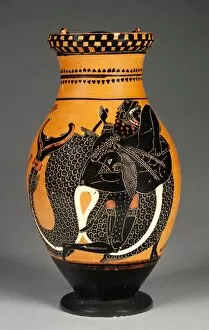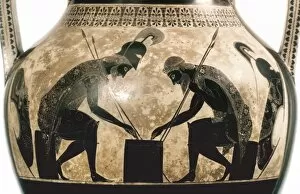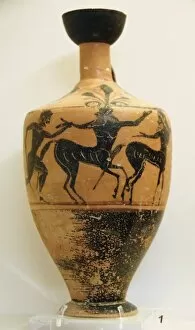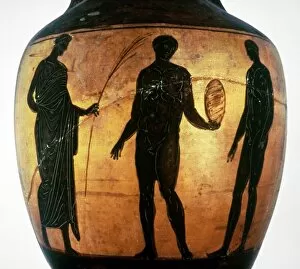Black Figure Collection (page 5)
"Exploring the Beauty of Black Figure: A Journey through Ancient Greek Pottery" Step back in time and immerse yourself in the captivating world of ancient Greece
For sale as Licensed Images
Choose your image, Select your licence and Download the media
"Exploring the Beauty of Black Figure: A Journey through Ancient Greek Pottery" Step back in time and immerse yourself in the captivating world of ancient Greece, as we delve into the enchanting artistry pottery. From mythical heroes to epic battles, these exquisite vessels offer a glimpse into the rich tapestry of Greek civilization. Witness Hercules' triumphant feat as he brings Cerberus to Eurystheus, flanked by Hermes and Athena. The intricate details on this 6th-century BC masterpiece transport us to a realm where gods and mortals intertwine. Marvel at an amphora adorned with Athena herself, crafted between 363-2 BC. This Panathenaic prize jar exudes elegance and grace, showcasing the skillful craftsmanship that defined this era. A krater from Farsala transports us to the heart of a fierce battle for Patroclus' body. The dynamic scenes depicted on this black-figure vessel capture both the intensity and tragedy inherent in Greek mythology. Intriguingly preserved is a depiction of a foot-race from the 6th century BC—a testament to ancient Greeks' love for athletic competitions that still resonates today. Behold an archaic terracotta Panathenaic prize amphora jar; its delicate beauty reflects not only artistic prowess but also serves as a symbol of honor bestowed upon victorious athletes during grand festivities. Embark on Theseus' legendary quest as he fearlessly attacks the Minotaur—an awe-inspiring scene captured on an earthenware amphora dating back to c. 520 BC—showcasing bravery amidst perilous encounters. The enigmatic allure continues with depictions of boxing matches etched onto another black-figure amphora from c. 6th century BC—an ode to physical prowess celebrated by ancient Greeks through their artistry.


